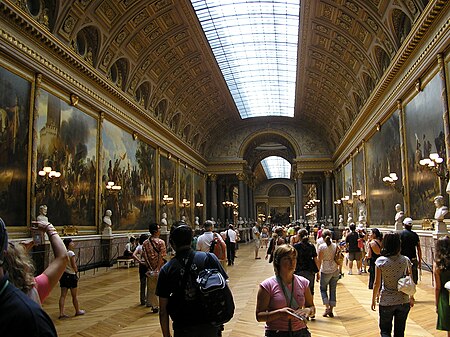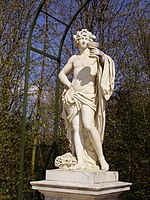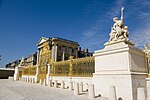1978 Palace of Versailles bombing
1978 crimes in France1978 in ParisAll pages needing factual verificationBuilding bombings in FranceExplosions in 1978 ... and 4 more
Improvised explosive device bombings in FranceJune 1978 events in EuropeTerrorist incidents in France in 1978Terrorist incidents in Paris

Around 2:30 am on Monday, 26 June 1978, the historic Palace of Versailles near Paris, France, was bombed by Breton nationalists belonging to the Breton Liberation Front (FLB). The powerful explosion occurred on the ground floor of the left wing of the palace and caused damage within an 80 meter radius. Many statues and priceless paintings were damaged, including an entire gallery and several pieces of Napoleonic art, and a wide hole was opened in the ceiling. The bomb caused millions of francs in damage. The Hall of Mirrors, opera house and chapel were undamaged. One night guard was wounded.
Excerpt from the Wikipedia article 1978 Palace of Versailles bombing (License: CC BY-SA 3.0, Authors, Images).1978 Palace of Versailles bombing
Rue des Récollets, Versailles
Geographical coordinates (GPS) Address Website Nearby Places Show on map
Geographical coordinates (GPS)
| Latitude | Longitude |
|---|---|
| N 48.804425 ° | E 2.1202861111111 ° |
Address
Château de Versailles
Rue des Récollets
78000 Versailles, Saint-Louis
Ile-de-France, France
Open on Google Maps










